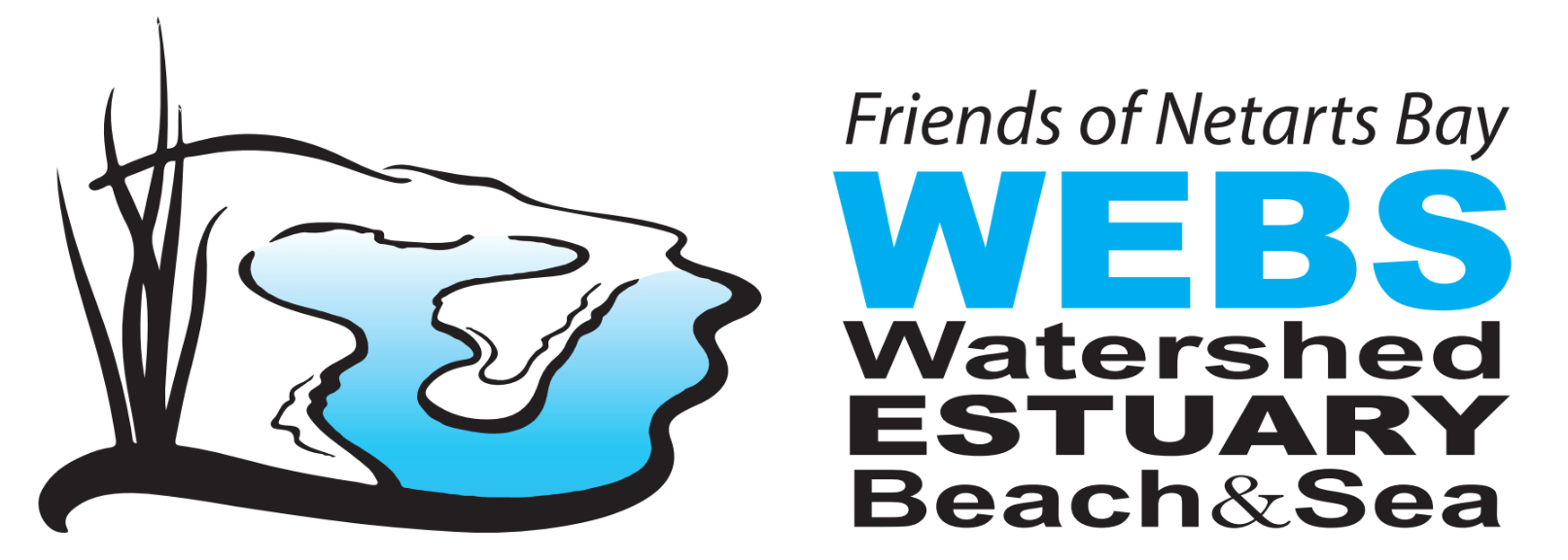Virtual Community Programs
Subscribe to our YouTube Channel to be notified of our new releases.
Did you ever wonder where crabs go as they move invisibly under the surface? In this recorded presentation, Dr. Sarah Henkel sheds some light on this mystery!
The Dungeness crab is an ecologically and economically important species listed by ODFW as an Oregon Conservation Strategy species. These popular crustaceans can be found in a variety of habitats including sand, mud, and eelgrass beds, and range from the intertidal to 180 meters deep. They support a large industry with a retained catch that averages around 17 million pounds in Oregon annually!
Soar through the world of community science on the Oregon Coast, where local efforts are illuminating the future for our environment with the Friends of Netarts Bay WEBS!
This virtual panel presentation features project leaders from NOAA Marine Debris, USFWS, COASST, and Bird Alliance of Oregon who shared updates with the latest data that are enhancing our understanding of the environment, protecting wildlife, and engaging communities in hands-on science.
During the public event "Rockfish and the Changing Ocean," where we dove into the fascinating world of rockfish and the evolving marine ecosystem off the Oregon coast. Whether you’re a marine enthusiast, a fisherman, or simply curious to learn more about our ocean's health, this presentation promises to provide valuable insights into the resilience and challenges of Oregon’s rockfish populations. We hope you enjoy this engaging discussion and a chance to learn more about Oregon's first statewide black rockfish survey, and how it contributed to the 2023 rockfish population estimate.
Learn about the many different sized watersheds that Tillamook County is home to. Your backyard is sitting in one! In this episode of Nature Notes we will cover the basics of watersheds and highlight the five major river basins around Tillamook County.
Nature Notes with TEP and WEBS: These videos offer quick, virtual field experiences that highlight what we see in the dynamic Oregon Coast watersheds, estuaries, beaches and seas. They have been created in partnership with
Tillamook Estuaries Partnership.
Investigate your watershed in this hands-on episode of Nature Notes. Grab a sheet of paper, some washable markers, and a little water to make your own “Crumple Watershed”!
Nature Notes with TEP and WEBS: These videos offer quick, virtual field experiences that highlight what we see in the dynamic Oregon Coast watersheds, estuaries, beaches and seas. They have been created in partnership with Tillamook Estuaries Partnership.
Explore your watershed! Join Friends of Netarts Bay Watershed, Estuary, Beach, and Sea - WEBS(WEBS) and Tillamook Estuaries Partnership (TEP) as we demonstrate a simple tool (Google Earth) to help you discover more about watersheds- both in your back yard and around the world without leaving home.
Nature Notes with TEP and WEBS: These videos offer quick, virtual field experiences that highlight what we see in the dynamic Oregon Coast watersheds, estuaries, beaches and seas. They have been created in partnership with
Tillamook Estuaries Partnership.
Netarts Bay and the surrounding ocean waters are home to many Dungeness Crab. If you've explored beached on the Oregon Coast, it is likely you have encountered these crabs - scurrying around the bay, in a crab pot, or perhaps just remnant shells on the beach.
If you are curious about Dungeness crabs, then we have you covered!
This video was recorded live during the public event "Deeper Dive: Dungeness Crab" presented by Jim Young.
If you have been to Netarts Bay you have probably seen the harbor seals that live here. Did you ever wonder what they do and where they go?
Dr. Sheanna Steinglass, the Marine Mammal Program Leader at the Oregon Department of Fish and Wildlife shares her research on harbor seals talks about how to be a good neighbor to these iconic bay residents.
Jim Rice, Stranding Program Manager for the Marine Mammal Institute at Oregon State University, shares what to do if you think a marine mammal is injured or stranded and how you can best help in those situations.
This presentation was an Explore Nature co-hosted virtual event.
Netarts Bay is a unique system that is constantly changing. Full of life and rich habitats, this living bay is an incredibly important ecosystem. WEBS presents this in-depth online training session about Netarts Bay: how it was formed and has changed over the years, and the habitats within this salty inlet. Discover the common algae species and invertebrates that may be encountered while clamming, kayaking, or exploring along the shore.
This training session is led by WEB's own Jim Young, a retired marine biologist. The session provides great information for volunteers and partners helping with bay-related WEBS events, assisting as a science coach on our various school field trips, or for anyone just looking to enhance their knowledge of the local area.
There is more to sharks than just pointy teeth! Taylor Chapple is an Assistant Professor at Oregon State University, working to increase our understanding and appreciation of sharks off the Oregon coast and around the world. He is focused on shifting the current mantra from fear and apprehension of sharks to one of awe and inspiration.
This event is part of the Explore Nature series of hikes, walks, paddles and outdoor adventures.
In the 1800's Netarts Bay supported a large population of native Olympia oysters which sustained a commercial oyster harvest. Those original native Olympias are long gone, though Netarts Bay has a robust oyster industry based on a different species -- the Pacific oyster. Over the years a couple of attempts have been made to restore native Olympia oysters to the Bay, and a small population survives from those efforts.
The Puget Sound Restoration Fund runs a successful restoration program for native Olympia oysters. Learn about their work as we welcome Hilary Hayford, Habitat Research Director, for a virtual presentation.
Take a walk through the history of Oregon’s forests with us as we explore the relationship between these ecosystems and wildfires. Come learn about the beauty that comes after the fire as we shed a light on how equipped our forests are to come back after a major disturbance. We explore the Riverside Fire (burned in 2020), the Eagle Creek Fire (burned in 2017), recent fires along the Oregon Coast, and the personal relationship the Tillamook area has with fire.
Presented in partnership with Unbridled Conservation Outreach.
The two dominant beachgrasses of the U.S. Pacific Northwest, Ammophila arenaria (European beachgrass) and A. breviligulata (American beachgrass), build tall stable dunes that increase coastal protection but threaten some native animal and plant species. It was recently discovered that these two grass species, which have differential effects on dune shape, coastal protection, and native plant diversity, are hybridizing.
Rebecca Mostow, a PhD candidate at Oregon State University, tells the story of how this unexpected discovery was made and explains how you can help map new hybrids and expand our understanding of this unexpected event.
This event is part of the Explore Nature series of hikes, walks, paddles and outdoor adventures.
Join Slade Sapora for a comprehensive and very engaging presentation on the diverse birdlife found in the Netarts area. Slade teaches in Tillamook schools and has a deep background in seabird and shorebird research.
Birds of Prey know they're cool. And after this presentation, you'll know it too. We'll take a look at the wide variety of Birds of Prey that can be found around Netarts Bay. We'll explore the best ways to find these birds and how to identify them when you do. Gain insights on the behaviors and seasonal movements of these spectacular birds along the Oregon Coast.
The presenter is Ram Pampish, a professional biologist and accomplished bird illustrator and photographer.
Learn about the unique animals living in our intertidal areas! This video focuses on the Phylum Cnidaria, which includes Hydroids, Jellyfish, and Anemones. It is a small sample of a longer DEEPER DIVE volunteer training presented by WEBS board member and biologist, Jim Young.
Slade Sapora takes us on a fascinating exploration of the development of plant life from Earth’s formation to the present day, highlighting the plant life found around Netarts Bay along the way.
Slade teaches in Tillamook schools and has a degree in Botany, in addition to being an expert on birdlife.
Marine Biologist Jim Young provides a fascinating tour of the biology of some of the marine worms found in the Netarts area.
Learn about invasive plant species found around Netarts Bay and surrounding areas, and tips for getting involved in the control of these invaders. Presented by Celeste Lebo, a professional botanist with a long history of working with native and invasive plants along the Oregon coast.
From the whole Tuna to the fryer: In under 8 minutes, Lexi Fields and Rachel Phaksuwan of the Schooner Restaurant & Lounge will guide you through the steps of converting a whole Albacore Tuna into delicious Albacore Fish and Chips.
Want an introduction to the birdlife found around Netarts Bay? Want to know more about birders and birding? Then this video is for you! A presentation by Ram Papish, a professional biologist and artist.
Learn all about cleaning, cooking, and enjoying clams from Netarts Bay. Presented by Lexi Fields and Rachel Phaksuwan of the Schooner Restaurant
& Lounge.
Join Chef Maylin Chavez of Olympia Oyster Bar for an engaging tutorial in how to buy, store, shuck, and prepare the delicious oysters of Netarts Bay.
Everything you need to know for successful, safe, and responsible clamming
in Netarts Bay, presented by Dr. Tony D’Andrea of Oregon Fish and Wildlife.
Following up on his presentation on clamming techniques, Dr. Tony D’Andrea of Oregon Fish and Wildlife presents the extensive research done by the state on the abundance of various types of clams in each area of Netarts Bay, and how that information is used to guide the regulation of commercial and recreational harvests.
Netarts, on the northern coast of Oregon, has a very colorful and interesting history. Learn some of the stories gathered by longtime Friends of Netarts Bay - WEBS member John Anderson during research for the book he is writing about Netarts. This program was presented on November 7, 2020.
Learn the basics of nature and landscape photography with Friends of Netarts Bay - WEBS. This program was presented live on October 8, 2020 with an introduction to photography. Participants were then encouraged to head out over the next week to put their new skills to use.
The presenter is Jim Young, a resident of Netarts/Oceanside that has been working as a professional photographer for many years.
Learn about the unique animals living in our intertidal areas! This video focuses on the Phylum Porifera, which includes the sponges. It is a small sample of a longer DEEPER DIVE volunteer training presented by WEBS board member and biologist, Jim Young.
Learn about the early tourist attractions in Oceanside as the village approaches its centennial year. Consider the challenges faced by one of Oceanside's early residents. Listen to the stories of the families whose names were given to local creeks and learn about the origins of the name given to Netarts.
Presented by WEBS board member and historian, John Andersen, in partnership with Friends of Netarts Bay WEBS and Explore Nature.
Physical address:
WEBS Office is located at the:
Netarts Community Club
4949 Netarts Hwy W
Netarts, OR 97143
Mailing address:
Netarts Bay WEBS
PO Box 152
Netarts, OR 97143


